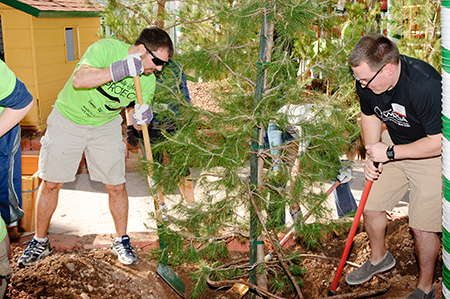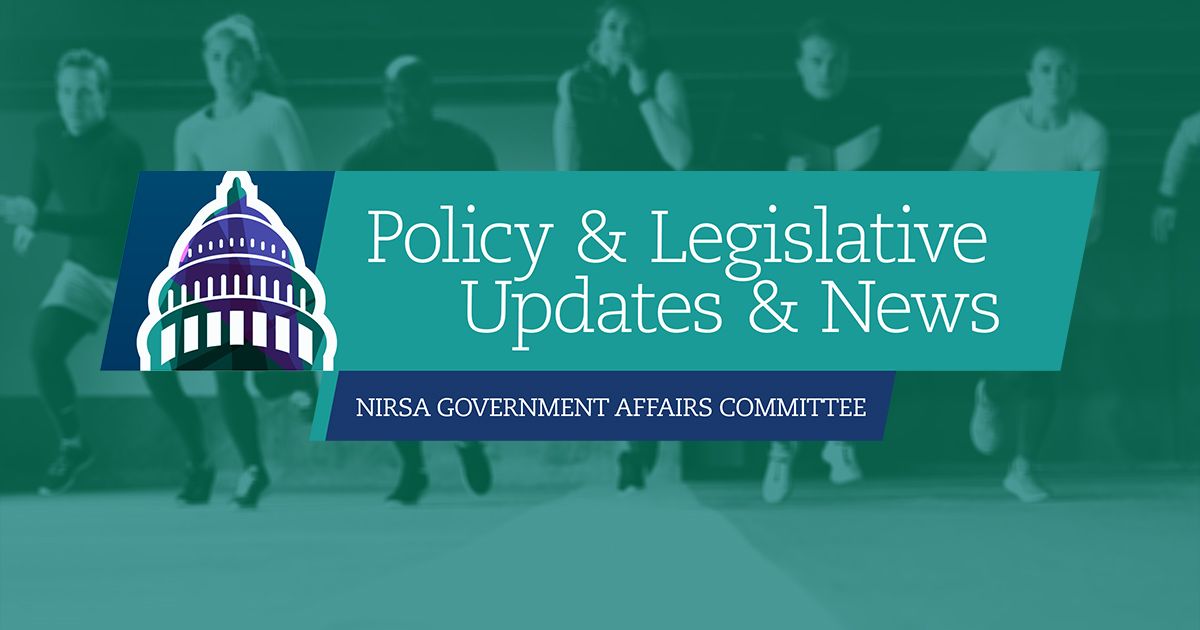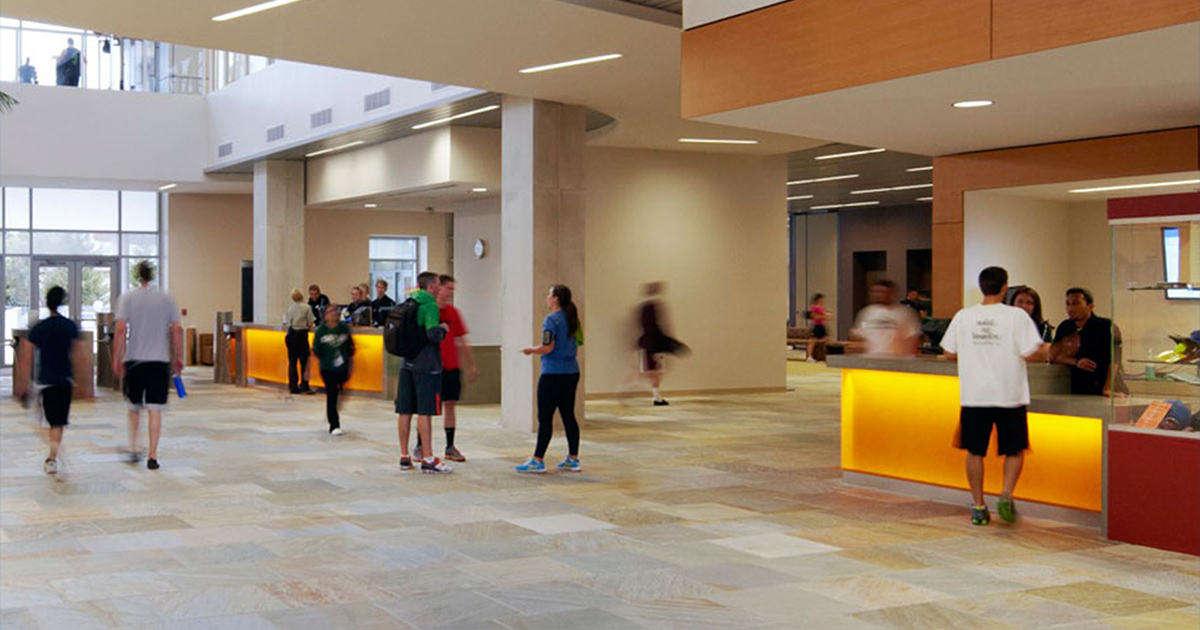By Simon Bravo
As more and more evidence continues to be published showing precisely how exercise helps the brain learn, the need to have collegiate recreation programs and facilities at the forefront of sustainability initiatives on campus becomes all the more important.

As educators, NIRSA professionals have an opportunity to support the future leaders of the world by assisting students in learning about and applying sustainability.
Students playing an intramural sport, swimming laps in a pool, participating in fitness classes, or working out on an elliptical machine are more receptive to learning than their non-active counterparts. Experiment after experiment, catalogued in books like Spark, by John J. Ratey, MD, shows that exercise improves cognitive flexibility, “an important executive function that reflects our ability to shift thinking and produce a steady flow of creative thoughts and answers” (54). By engaging students at the point of sweat and surrounding them with an environment that reflects sustainable practices and encourages responsible choices, we lay important groundwork for future learning.
Today, more than 18 million students attend colleges and universities in the United States alone—if they graduate with the skills that help societies develop more sustainably, higher education will have played a worthy role in leading our communities toward a new and better trajectory.
Sustainability as a core value is permeating more and more campus’ master planning and strategic decision making, partly because students are demanding it and partly because society’s challenges are demanding it.
To create the conditions that will prime a more sustainable future, higher education has to provide college and university graduates with the skills, background, knowledge, and habits of mind that will prepare them to meet the challenges presented by the future and there are many reasons why collegiate recreation can and should play a critical, active, and leading role in these efforts.
Campus recreation departments have traditionally had one of the largest carbon footprints on campus and they often use a disproportionate amount of energy. They also manage large, complex financial operations and interact with more of a college or university’s population than nearly any other entity on campus. As NIRSA volunteer leaders assessed the future of collegiate recreation and engaged in strategic planning for the association, sustainability emerged as a critical lens to view the work of our members’ and one we needed to adopt if we are to achieve our full potential as “Leaders in Collegiate Recreation.”
As leaders not only in collegiate recreation but also in higher education, NIRSA members advocate for healthy, inclusive, sustainable communities through shared knowledge, collaboration, and experiential activities. In December of 2011, the NIRSA Commission for Sustainable Communities was formed with leaders from across North America and charged with developing a multi-year plan for promoting education, raising awareness, and weaving sustainability into the fabric of the association and the profession.
Campus recreation departments are a vital part of students’ lives and have a long history of forging and nurturing positive and respectful relationships with students, positioning our members to engage and become involved in students’ efforts. Programs and facilities from the University of Nebraska—Lincoln to Southern Illinois University—Edwardsville, from Montclair State University to Portland State University and beyond show that students are more engaged in sustainability efforts and initiatives than ever before and they are seeking campus partners to advance their efforts.
The sweet spot for NIRSA and campus recreation is in inspiring the development of healthy individuals and communities world-wide, and sustainability offers students and practitioners in the field a relevant lens through which we can focus our efforts in an intentional way. The NIRSA Commission for Sustainable Communities is collaborating with thought leaders and working to engage the Association’s membership in the development a number of resources aimed at accelerating awareness, understanding, and actions to move the culture of collegiate recreation into a more holistic view of sustainability.
Going into to fall, there are so many opportunities to learn from colleagues and really breathe new life into your sustainability initiatives, whether on the social, economic, or environmental front. Check out some of the upcoming events focused on issues in sustainability:
- August 26-28 — Green Sports Alliance Summit
- October 6-9 — AASHE 2013 Conference & Expo
- October 16-18 — sustainability focused sessions at the NIRSA Triventure
- October 23 — Campus Sustainability Day
Even if you can’t travel to attend one of these focused events, you can still engage with your colleagues online. Ongoing discussions are taking place all the time in NIRSA’s Sustainability Community of Practice. Thought leaders from the field engage in weekly discussion questions and exchange best practices through the related resource library. And we’re always looking to share your good work with your fellow members; tell us what you’re department is doing to inspire healthy and sustainable communities.
As educators, NIRSA professionals have an opportunity to support the future leaders of the world by assisting students in learning about and applying sustainability. Because students are willing to support our work when it aligns with their values, initiatives, and expectations, collegiate recreation programs, facilities, and professionals have the power to create a living and learning environment by role-modeling support for the communities we envision.






